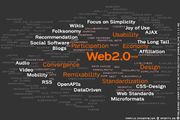Using Web 2.0 Tools to Enhance EFL Teaching Practice
From WikiEducator
The Web 2.0 is also known as the "Read and Write Web." This means that, unlike its predecesor the Web 1.0, it enables us not only to access but also to create and share content. New tools with such capabilities are constantly being developed. On this page you will find:
- information about some Web 2.0 tools
- some ideas as to how they can be used in the classroom.
Please feel free to add your findings and suggestions.
Contents
Aggregators
Blogs
Graphic Organizers
Learning Management Systems
Microblogs
Online Communities
Podcasting
Photo sharing
RSS Feeds
Slide sharing
Social Bookmarking
Types of Communication
- synchronous versus asynchronous
- Blended classes: 1) synchronous/asynchronous, 2)online/f2f, 3) learning theory
Video Hosts
Virtual Worlds
Wikis
Misc.
VoiceThread
Description
- Web-based application that allows users to hold asynchronous conversations around media which could be in the form of audio, images, videos or text.
- It also allows visitors to make comments in five different ways:
- by telephone
- by webcam
- by microphone
- by text
- by file upload. You can also use a combination of the above.
- The conversations can be shared with anyone in the world or they can be kept private for selected individuals.
Note:This tool does not require any downloading and provides you with an embed code so it can be added to blogs, wikis and other web pages. You can see some useful tutorials on the site itself.
Possible uses in the classroom
- Conversations around a given topic: some examples below
- Jobs: prior to their use of the tool, the learners had been working on this topic in their coursebooks.
- Animals in Danger: this was part of a bigger project during which the learners looked for information on the topic, shared findings in class and finally chose the animal they wanted to talk about.
- Earth Day: two groups of kids worked simultaneously on this project. They looked for information about the topic and discussed it in class. As a "Take Action" activity, they wrote their messages on paper bags that were then displayed on the school noticeboard. Finally, they created the VoiceThread for inclusion in their class blog.
- Jobs: prior to their use of the tool, the learners had been working on this topic in their coursebooks.
- Picture description: the teacher can upload pictures, or even better, drawings made by the learners themselves, for others to describe.
- Guessing activity: use incomplete pictures and invite students to make guesses about them.
- Giving directions: upload different plans of parts of a town with different buildings highlighted (the tool allows you to do this) and invite suggestions about the best way to go from one place to another.
- Storytelling: upload different pictures around which students can create a story. The teacher can provide the opening sentence for each picture/part of the story for students to build from there.
- Film review: upload a video of a movie trailer to prompt comments on the film.
- Making predictions: upload the image of the cover of a book for students to make predictions about genre, plot, etc.
To do list
Those who wish to add to this page are encouraged to use the discussion tab above.
- Organize web tools according to blogs, microblogs, wikis, agregators, etc.
- Provide strategies and examples for each type of tool.
- Provide internal links (e.g., within Wikieducator) that foster collaboration among EFL/ESL educators.
